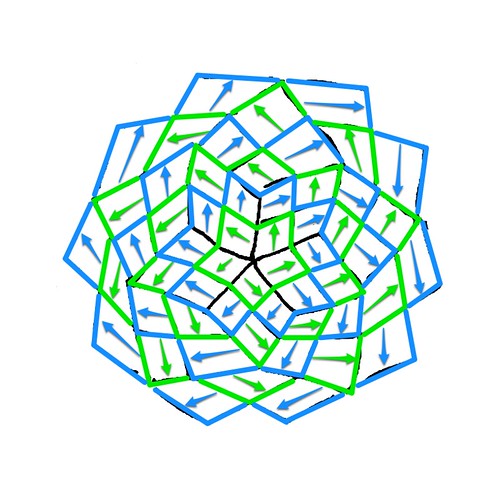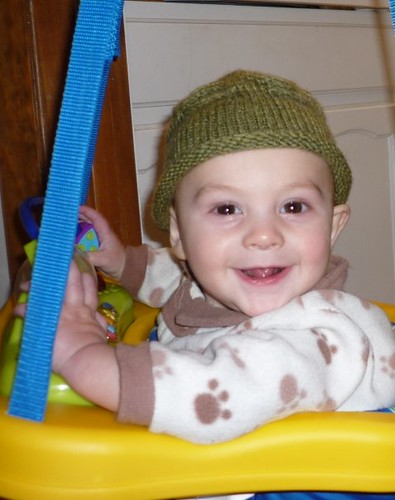The "Ladybird Stitch" from Marianne Kinzel's lace knitting books has long interested me. Scroll down to Figure 6 in this embedded excerpt from The First Book of Modern Lace Knitting to see a picture of the fabric:
 I have found it useful in graphing my own patterns to sometimes
represent groups of stitches that usually are shown as several symbols
as one symbol. This has helped me, for example, to understand better the stitch
structure of the “Ladybird” pattern. If you replace the “yo, k1-b,
yo” group with a single symbol, it makes for a more compact
chart that more clearly shows the proportions of the knitted piece.
Here’s a graph of the ladybird mesh to show what I mean (edge stitches
aren’t graphed correctly):
I have found it useful in graphing my own patterns to sometimes
represent groups of stitches that usually are shown as several symbols
as one symbol. This has helped me, for example, to understand better the stitch
structure of the “Ladybird” pattern. If you replace the “yo, k1-b,
yo” group with a single symbol, it makes for a more compact
chart that more clearly shows the proportions of the knitted piece.
Here’s a graph of the ladybird mesh to show what I mean (edge stitches
aren’t graphed correctly):
A
full repeat of the ladybird pattern (shown on the graph inside the heavy
lines) when knitted really is approximately square. And using the “yo, k1-b,
yo”
symbol
means that the placement of the yarnover symbols in the chart more
accurately represents what is going on in the knitted piece. The “yo, k1-b, yo” group is approximately equal in size to the
single yarnovers since the latter are strained horizontally by the
sudden decrease in stitches on the rows in which they appear.
Done
this way, there’s no way to tell from the graph that the yarn overs
form 45˚ diagonals in the knitted piece, or that the proportions of the
pattern when knitted are square, roughly the same as garter stitch (one
stitch = two rows), though much less dense a fabric! The graph may be a
little easier to read, but that is a matter of taste, I think. And on
patterns like this one, where the stitch count changes from row to row,
one square in the graph can’t equal one stitch. Mrs. Kinzel uses blank
squares to address the imbalance.



![Reblog this post [with Zemanta]](http://img.zemanta.com/reblog_e.png?x-id=5e0332a8-da1a-4343-8b2e-44a2cbc0daf8)
 I can make the reversible hound's-tooth check entrelac with any square that is half-knit, half-purl ribbing. So, if I chose to, I could just use the same diagram I used for the first hat, and use (k7, p7) or (k8, p8) for the squares. But that would make the symmetry of the hound's-tooth motifs too hard to see (except in a larger garment like a sweater).
I can make the reversible hound's-tooth check entrelac with any square that is half-knit, half-purl ribbing. So, if I chose to, I could just use the same diagram I used for the first hat, and use (k7, p7) or (k8, p8) for the squares. But that would make the symmetry of the hound's-tooth motifs too hard to see (except in a larger garment like a sweater).



![Reblog this post [with Zemanta]](http://img.zemanta.com/reblog_e.png?x-id=b5ccad45-a649-4864-a455-4f7041ed1239)





![Reblog this post [with Zemanta]](http://img.zemanta.com/reblog_e.png?x-id=a3493d37-3b77-4ce4-b846-0cd8f481ddea)

![Reblog this post [with Zemanta]](http://img.zemanta.com/reblog_e.png?x-id=75ea3b8f-3caf-46bf-907a-26dee3df3eef)